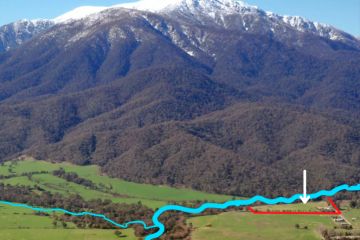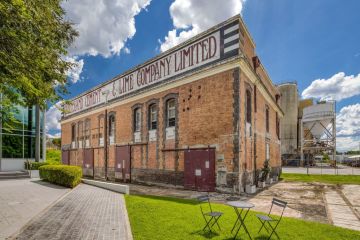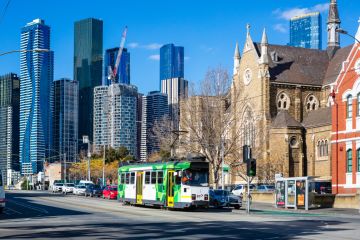The Canberra suburb where house prices have grown more than 30 per cent
While house price growth is slowing in Canberra, one inner-city suburb is blowing the competition away.
Ainslie’s median house price has jumped 32.6 per cent over the last year to $1.16 million, according to Domain Group data.
Over the same period, Canberra’s overall house price has grown by 4 per cent, sitting at a median of $740,215.
Among suburbs with more than 50 sales in the past 12 months, Palmerston and O’Connor also recorded strong growth in house prices, up 21.4 per cent and 19.6 per cent respectively.
Narrabundah’s median house price has increased 13.5 per cent, defying falling prices in the Inner South.
Units in Phillip have experienced the worst fall, at 21.4 per cent. The median unit price for the suburb is $330,000.
Griffith and the city have also declined, with the median unit price dropping 13.8 per cent and 13.5 per cent respectively.
Stephen Bunday of LJ Hooker is known as the “Ainslie specialist”, and attributed the suburb’s growth to an appealing combination of lifestyle and location.
“Ainslie is a really nice place to live, you are on the fringe of the city but it’s almost like you are in the bush with all sorts of wildlife around,” he said.
Mr Bunday – who is the franchise owner of LJ Hooker Dickson – said the rejuvenation of the city, and in particular Braddon, had boosted Ainslie’s performance.
“It’s a lifestyle thing, and that has been a massive game changer in making Canberra more liveable.
“Having grown up in Perth, I saw its urban development spread out, but then developers started to redeveloped older parts of the city. I think city-fringe real estate is the way to go.”
In September, Ainslie recorded its first sale above $2 million. It was a custom-designed home built to passive design principles that raised the bar to $2.15 million, breaking the previous suburb record by $175,000.
Domain senior research analyst Dr Nicola Powell said that while current lending conditions are dampening the market, Ainslie remained strong as buyers continue to be pushed out of the Inner South.
“Our market is now full of quality buyers because the lending environment has changed so much and Ainslie would be one of those suburbs that attract a quality buyer,” she said.
“Ainslie offers many features that the Inner South does – it’s an established older suburb where you can get a classic red-brick Canberra home, which is highly sought after for buyers.”
- Related: Ainslie home sells at auction after marathon effort
- Related: House prices fall in Canberra’s most expensive region
- Related: How much value will green spaces add to a Canberra home?
Dr Powell said Palmerston was one of the older areas of Gungahlin and offered affordability.
“The median price is below that of Canberra [and] young families are moving to the area and looking for a home they can add value to,” she said.
While house prices across Belconnen have jumped 7.1 per cent over the past 12 months, the most expensive suburb in the region, Weetangera, has recorded the greatest fall in house prices – down 7.6 per cent to $832,000.
House prices have also fallen in Gordon, down 5.6 per cent, and Holder, down 5.4 per cent.
In the unit market, while prices across Canberra have fallen 4 per cent over the year, Dickson has bucked the trend. Unit prices have risen 11.1 per cent to $539,000. This comes as an array of developments have hit the market in Dickson over recent months including stage one of both Doma Group’s DKSN and Art Group’s Soho.
Colliers International executive project marketing Sam Howes attributed Dickson’s growth to gentrification.
“Dickson definitely wasn’t the greatest area but it has started to pick up with dining and retail coming to the suburb. The light rail is also a massive contributor,” he said.
Mr Howes said the DKSN development – on the former Dickson Motor Registry site – would inject further amenity into the suburb and he doesn’t expect a decline in unit prices anytime soon. ACT government offices will feature in the development.
“The government has signed a 20-year lease for the building … the total number of employees is set to be 1100, so it will have a great vibe throughout the working week as well as weekends,” he said,
Dr Powell said units located on the light rail corridor were increasing in value – pointing to Gungahlin where the median has grown 8.7 per cent over the year.
“Investors or owner-occupiers are looking to purchase in an area that will be connected by light rail so they can commute into the city,” she said.
“It reflects the kind of buyer that wants to be away from the hustle and bustle of the city, but still wants to be close to amenity.”
We recommend
States
Capital Cities
Capital Cities - Rentals
Popular Areas
Allhomes
More







